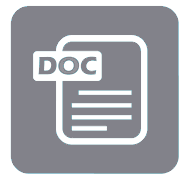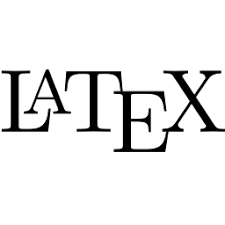Online Submissions
Already have a Username/Password for Jurnal Teknologi Informasi?
Go to Login
Need a Username/Password?
Go to Registration
Registration and login are required to submit items online and to check the status of current submissions.
Author Guidelines
AUTHOR GUIDELINES OF
JuTI "JURNAL TEKNOLOGI INFORMASI"
MANUSCRIPT GENERAL GUIDELINES
- The authors must follow the given template which can be downloaded from the JuTI website. download here.
- The manuscript must not contain any plagiarism element.
- The manuscript is in Indonesian or English and is at least 10 pages long.
- It is typed using A4 size paper (210 mm x 297 mm) in two columns from the second page with upper, lower, right and left margins are 2.5 cm wide.
- The middle of the first page contains the title of the manuscript in capitals and 12pt size.
- Under the title lies two abstracts content (in English and Indonesian) and the keywords from each abstract.
- The manuscript is typed using one space size, and Times New Roman font.
- The submitted manuscript should be in Microsoft Word document, or in PDF.
MANUSCRIPT BODY TEXT GUIDELINES
A. ABSTRACT
The abstract is a synopsis of the work containing the problems studied, the purpose of research, information and methods used to solve problems, and conclusions. Abstracts are limited to 200 words and should not contain references, equations, figures, and tables. It only has ONE PARAGRAPH without any tab. The font size for abstracts and keywords is 11pt. Keywords are separated by comma (,). It contains no more than six (6) words, but the minimum is three (3) words.
B. INTRODUCTION
In the Introduction chapter, the writer must state the purpose of the work at the end of the introduction. Prior to the objective section, the author should provide an adequate background, and a brief literature survey to explain the solution or method, point out the limitations of previous studies, indicate what you hope to achieve to resolve the problem boundaries, and demonstrate the scientific benefits or novelties of this article.
The official language of articles to be published in JuTI started in the year 2022. Editors will also accept article manuscripts submitted by foreign and local writers to JuTI which are written in English. Articles submitted must have never been published elsewhere and clearly stated in the Introduction (Chapter 1).
This chapter also provides the theoretical background and specific terminology used in your research. This section can help readers from various backgrounds to more easily understand the content of the article. Quotations in a literature review, for example, are written in the form: “…used as an object of research [1]”. The citations are mentioned in the Bibliography section and are arranged in the order mentioned in your article. The writing of terminology or literature study is not written in a special sub-chapter in Chapter 1. The references only provide relevant studies and information to support the research background, method, and discussion.
Please also add at the end of the Introduction a statement that this article is the original result of your research or the development of previous research using your own ideas. Articles that you submit will be partially or completely checked with plagiarism checker software.
C. METHODS
The methods described in this section are scientific in nature and should allow readers to repeat their experiments. Please provide sufficient detail so that the results of the study can be reproduced. Published methods should be indicated with appropriate references in the Bibliography section. Where relevant modifications exist, these should also be explained.
D. RESULTS AND DISCUSSION
Research results must be explained clearly and concisely. The results should summarize (scientific) findings rather than provide very specific data. Please explain the differences between your results or findings and previous publications by other researchers. The discussion should explore the significance of your work. Provide quotes from previous studies that can support the results of your research.
E. CONCLUSION
The closing section should be in the form of a concluding paragraph that addresses the research objectives and tells how your work can advance current knowledge. Without clear Conclusions, reviewers and readers will find it difficult to judge the work, and whether or not it should be published in a journal. Do not repeat the results that have been shown in the abstract, or just the experimental results points. Provide a clear scientific justification of your work, and indicate possible applications and further development. You should also suggest future research and/or indicate ongoing research.
F. REFERENCES
Citation to other writing sources mentioned by the author in the manuscript should be adjusted to the References chapter sorted by the occurrence of the quotation, not by alphabet. To make things easier, we recommend using the MENDELEY software facility as references manager or using the REFERENCES Menu and the BIBLIOGRAPHY submenu available in Microsoft Word. Reference writes with IEEE Style.
Submission Preparation Checklist
As part of the submission process, authors are required to check off their submission's compliance with all of the following items, and submissions may be returned to authors that do not adhere to these guidelines.
- The submission has not been previously published, nor is it before another journal for consideration (or an explanation has been provided in Comments to the Editor).
- The submission file is in OpenOffice, Microsoft Word, RTF, or WordPerfect document file format.
- Where available, URLs for the references have been provided.
- The text is single-spaced; uses a 12-point font; employs italics, rather than underlining (except with URL addresses); and all illustrations, figures, and tables are placed within the text at the appropriate points, rather than at the end.
- The text adheres to the stylistic and bibliographic requirements outlined in the Author Guidelines, which is found in About the Journal.
- If submitting to a peer-reviewed section of the journal, the instructions in Ensuring a Blind Review have been followed.
Copyright Notice
Articles published in JuTI are licensed under a Creative Commons Attribution-ShareAlike 4.0 International (CC BY-SA 4.0) license, which permits anyone to copy, transform, or redistribute articles for any lawful purpose in any medium, provided appropriate credit is given to the original author(s) and JuTI is recognized as its original publisher. A link to this license should also be provided. Any derivative work of an article published in JuTI must also be shared under the same (or compatible) license.
Both copyright and publishing rights on articles are retained by the respective author(s), without restrictions. Only a non-exclusive license is granted to JuTI to publish the article and identify itself as its original publisher.
Any submission to JuTI will be taken to mean all authors associated with the manuscript agree to these conditions.
Privacy Statement
Ethics and Security
Editors of the JuTI may seek advice on submitted papers not only from the technical reviewers but also on any aspect of the paper that raises concerns. This may include, for example, ethical concerns or access to data or materials. At times, concerns may also relate to the societal implications of publishing a paper, including threats to security. In such circumstances, advice will usually be sought in conjunction with the technical peer-review process. Overall, the decision to publish, the final decision whether to publish is the responsibility of the editor of the journal concerned.
The names and email addresses entered in this journal site will be used exclusively for the stated purposes of this journal and will not be made available for any other purpose or to any other party.

1.png)




